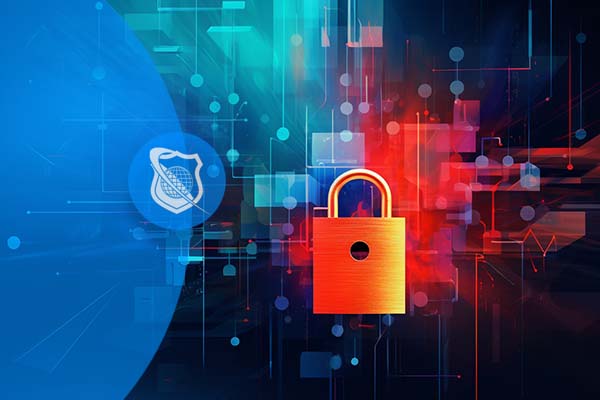Understanding Cyber Threat Actors and Their Diverse Motivations
In today’s digital age, cyber threats are more sophisticated, widespread, and impactful than ever before. From individual hackers to nation-states, a wide array of threat actors operate within the cyber landscape, each driven by distinct motives and employing varied tactics. Understanding these actors is essential for organizations, policymakers, and individuals aiming to defend their assets effectively. Recognizing who these threat actors are, what motivates them, and how they operate can significantly enhance cybersecurity strategies and preparedness. This comprehensive overview explores the types of cyber threat actors, their motivations, typical profiles, methods, and the best approaches to counteract their activities.
Overview of Cyber Threat Actors
What exactly are cyber threat actors? Broadly speaking, they are individuals, groups, or even nation-states that carry out malicious activities online to achieve specific objectives. These actors can significantly vary in sophistication, resources, and intent, leading to a complex landscape of cyber threats affecting individuals, corporations, and entire nations.
Definition and Types of Cyber Threat Actors
Cyber threat actors encompass a spectrum of entities motivated by different goals. They range from amateur hackers experimenting out of curiosity to highly organized state-sponsored groups engaged in espionage and strategic cyber warfare. Each type exploits vulnerabilities in digital infrastructure to meet their objectives, whether financial, political, or ideological.
Differences between State-Sponsored, Criminal, Hacktivist, Insider, and Script Kiddies
- State-Sponsored Actors: These are government-backed entities with significant resources. Their activities include espionage, sabotage, and influence operations targeting other nations’ critical infrastructure, governments, or corporations. Examples include Russia’s APT28 or China’s APT10, known for cyber espionage campaigns.
- Cybercriminals: Organized groups focused on financial gain through activities like ransomware attacks, data theft, and fraud. They often operate in hierarchies, using malware, phishing, and botnets to maximize profits.
- Hacktivists: Ideologically motivated individuals or groups who leverage hacking to promote political or social causes. Their tactics include website defacement, DDoS attacks, and data leaks, aiming to raise awareness or disrupt targeted entities.
- Insiders: Disgruntled employees or contractors with authorized access who intentionally or unintentionally cause harm. Their actions can include data theft, sabotage, or espionage from within the organization.
- Script Kiddies: Amateur hackers with limited technical skills who use pre-made hacking tools to achieve simple attacks. Their motives are often curiosity, peer recognition, or thrill-seeking, but they can still cause significant damage.
Evolution of Threat Actors Over Time
The evolution of cyber threat actors reflects technological advances and geopolitical shifts. Early cyber threats were primarily individual hackers or small groups, but today’s landscape includes highly organized nation-states with advanced capabilities. The rise of ransomware, cyber espionage campaigns, and misinformation operations exemplifies this progression. Threat actors have also adapted their tactics, employing automation, AI, and social engineering to maximize impact and evade detection.
Common Characteristics and Tactics Used by Various Actors
- Resourcefulness: Most threat actors, especially nation-states and organized crime groups, have substantial resources for research, development, and deployment of sophisticated tools.
- Persistence: Many actors maintain long-term access to compromised networks, enabling continuous espionage or disruption.
- Use of Deception: Obfuscation techniques like encryption, anonymization, and false flag operations are common.
- Focus on Exploitation: They often exploit known vulnerabilities or social engineering to gain initial access.
Impact of Threat Actors on Individuals, Organizations, and Nations
Cyber threat actors pose varying degrees of risk depending on their objectives and capabilities. For individuals, threats include identity theft, financial loss, and privacy breaches. Organizations face data breaches, operational disruptions, and reputational damage. For nations, threats encompass critical infrastructure sabotage, espionage, and influence campaigns that can destabilize political systems or undermine security. The interconnectedness of today’s digital environment amplifies the potential consequences of these threats, emphasizing the need for comprehensive awareness and defense strategies.
Motivations Behind Cyber Attacks
Understanding why cyber threats occur is as crucial as knowing who commits them. Motivations drive the choice of targets, tactics, and timing of attacks. These motives are often intertwined and can evolve over time, influenced by geopolitical developments, economic pressures, or ideological shifts. Recognizing these motivations helps in crafting targeted defenses and anticipating future threats.
Financial Gain
Financial motives dominate the cyber threat landscape, with criminal organizations orchestrating attacks designed to generate immediate monetary profit. Techniques such as ransomware, data theft, and fraud are commonplace. For instance, ransomware gangs like REvil or LockBit encrypt victims’ data and demand hefty ransom payments, often in cryptocurrency, to restore access. Similarly, stolen personal or financial data is sold on dark web marketplaces, fueling further criminal activity.
Methods used to monetize these attacks include:
- Ransomware extortion
- Selling stolen credit card or banking information
- Fraudulent schemes like business email compromise (BEC)
- Selling proprietary data or trade secrets to competitors or foreign entities
Examples of financially motivated cyber threats
- The WannaCry ransomware attack in 2017 affected hundreds of thousands of computers worldwide, demanding ransom payments in Bitcoin.
- The theft of millions of credit card details from retail giants like Target and Home Depot, leading to financial fraud and identity theft.
- Data breaches involving health records or personal information, which are sold on illicit markets for profit.
Political and Ideological Goals
Hacktivism embodies the use of hacking for political or social causes. Groups like Anonymous or Lizard Squad have launched operations to protest policies, promote transparency, or disrupt entities they oppose. Tactics include website defacement, DDoS attacks, and leaking sensitive information to garner public attention.
These attacks often aim to influence public opinion, sway political processes, or embarrass governments and corporations. For example, during the Arab Spring, hacktivists targeted government websites to support revolutionary movements. Similarly, the 2016 US elections saw cyber interference campaigns aimed at influencing voter perceptions and destabilizing political discourse.
National Security and Espionage
Nation-states engage in cyber espionage to gather intelligence on foreign governments, military capabilities, or corporations. These advanced persistent threats (APTs) operate covertly over extended periods, stealing sensitive information to bolster strategic advantages. Notable groups like China’s APT10 or Russia’s APT29 exemplify this activity, often targeting intellectual property, defense secrets, or diplomatic communications.
Cyber warfare extends to disrupting critical infrastructure, such as power grids or financial systems, to weaken adversaries or demonstrate strategic dominance. An example includes the Stuxnet worm, which targeted Iran’s nuclear facilities, causing physical damage to centrifuges and delaying nuclear development programs.
Revenge or Personal Grievances
Insider threats often originate from personal motives. Disgruntled employees or contractors may steal data, introduce malware, or sabotage systems out of revenge, dissatisfaction, or competition. These threats are particularly challenging as insiders have legitimate access, making detection difficult without comprehensive monitoring.
Detection strategies include behavioral analytics, strict access controls, and regular audits to identify anomalies. High-profile cases, such as the Edward Snowden leaks, underscore the damage insiders can inflict when motivated by personal grievances or ideological beliefs.
Competitive Advantage and Intellectual Property Theft
Corporate espionage involves stealing trade secrets, proprietary data, or disrupting rivals’ operations. Competitors or state-sponsored actors target industries like technology, pharmaceuticals, or manufacturing to gain strategic advantages. Examples include hacking campaigns aimed at stealing blueprints, research data, or product designs, which can be sold or used to accelerate development.
Ideological or Religious Extremism
Extremist groups leverage cyber attacks for propaganda, recruitment, and intimidating opponents. Attacks may include cyber harassment, website takedowns, or dissemination of propaganda videos. These actions aim to recruit members, rally supporters, or target specific communities or organizations perceived as enemies.
Emerging Motivations and Trends
As the geopolitical landscape shifts, so do the motivations driving cyber threats. Misinformation campaigns, often facilitated by state or non-state actors, manipulate public opinion and destabilize societies. Hybrid threat actors combine motives, employing cybercrime, espionage, and influence operations simultaneously. The evolution of motives is driven by global conflicts, economic pressures, and technological developments like AI and deepfake technology, which enhance the sophistication and scope of cyber threats.
Profiles of Common Cyber Threat Actors
Understanding the typical profiles of threat actors helps tailor defensive measures. Each actor type has unique attributes, capabilities, and operational patterns that influence their methods and targets.
State-Sponsored Actors
Nation-states operate with strategic objectives, often engaging in cyber espionage, sabotage, and influence campaigns. Their resources allow for highly sophisticated operations, including zero-day exploits, custom malware, and long-term infiltration. Examples include the Chinese APT10, which targeted global supply chains, and Russia’s APT29, linked to interference efforts during elections.
Criminal Organizations
Organized cybercriminal groups are highly hierarchical, employing a variety of tools like phishing, malware, and botnets to conduct large-scale operations. Their primary goal is financial profit, often through ransomware campaigns, data theft, or fraud schemes. Notable examples include the Emotet botnet or the Cobalt Strike toolkit used in targeted attacks.
Hacktivists
Hacktivists are driven by ideological motives, seeking to promote causes or expose perceived injustices. They typically use tactics such as DDoS, website defacement, and data leaks. Groups like Anonymous have conducted operations targeting governments, corporations, and law enforcement agencies worldwide, often with high-profile campaigns like Operation Payback or OpISIS.
Insiders
Insider threats stem from individuals within organizations who misuse their access for personal gain or revenge. They can operate covertly, stealing sensitive information or sabotaging systems. Detection involves behavioral analytics, strict access controls, and regular audits. The case of Edward Snowden is a prominent example of insider threat with significant global repercussions.
Script Kiddies and Amateur Hackers
These are less sophisticated attackers who utilize pre-existing hacking tools or scripts. Their motivations are often curiosity, peer recognition, or the desire for a quick thrill. Despite their limited skills, they can still cause damage, especially if they target vulnerable systems or participate in larger campaigns. Their activities highlight the importance of basic security hygiene and awareness.
Understanding the Methods and Tactics of Threat Actors
Threat actors employ a variety of methods to infiltrate systems, maintain access, and achieve their objectives. Recognizing these tactics is critical for developing effective defenses and early detection capabilities.
Reconnaissance and Intelligence Gathering
Before launching an attack, threat actors conduct reconnaissance to map out targets’ infrastructure and identify vulnerabilities. They leverage open-source intelligence (OSINT), scanning social media, websites, and public records for useful information. This phase helps in crafting targeted phishing emails, selecting vulnerable software, or identifying key personnel for social engineering.
Initial Intrusion Techniques
- Phishing and Spear-Phishing: Sending deceptive emails that trick recipients into revealing credentials or opening malware-infected attachments.
- Social Engineering: Manipulating individuals into providing sensitive information or granting access.
- Exploitation of Software Vulnerabilities: Using known security flaws in operating systems or applications to gain unauthorized access.
Malware Deployment and Exploitation
Once inside, threat actors deploy malware such as ransomware, trojans, or backdoors to establish persistence, escalate privileges, and move laterally within networks. These tools enable continuous access and control, allowing attackers to exfiltrate data or disrupt operations.
Command and Control Infrastructure
Malware communicates with command-and-control (C2) servers, often using encrypted channels to evade detection. Botnets, large networks of compromised machines, facilitate coordinated actions such as DDoS attacks or mass data exfiltration.
Data Exfiltration Techniques
Stealth is vital for threat actors during data theft. They use methods like encrypting data before transfer, hiding data in legitimate traffic, or utilizing cloud services and stolen credentials. Covering tracks involves deleting logs or employing anti-forensic techniques to avoid detection and maintain access for future operations.
Defensive Strategies and Threat Actor Disruption
Counteracting cyber threat actors requires a proactive, layered approach. Combining threat intelligence, technical defenses, user awareness, and incident response capabilities creates a resilient security posture capable of detecting, disrupting, and mitigating attacks.
Threat Intelligence and Monitoring
Sharing threat intelligence among organizations and leveraging external sources enhances situational awareness. Deploying honeypots and deception technologies can lure attackers, revealing their tactics and tools. Behavioral analytics and anomaly detection help identify unusual activities indicative of ongoing threats.
Strengthening Technical Defenses
- Regularly patch and update software to close known vulnerabilities.
- Implement advanced endpoint protection solutions to detect malware and suspicious activity.
- Segment networks to contain breaches and prevent lateral movement.
- Configure firewalls and intrusion detection/prevention systems to monitor and block malicious traffic.
Employee Training and Awareness
Employees are often the first line of defense. Regular training on social engineering tactics, phishing recognition, and cybersecurity best practices reduces human error. Cultivating a security-aware culture ensures that staff remain vigilant to emerging threats.
Incident Response and Recovery
Preparedness is key to minimizing damage. Developing and regularly testing incident response plans enable rapid action in the event of a breach. Post-incident analysis, lessons learned, and continuous improvement fortify defenses against future attacks.
Conclusion
Understanding the diversity of cyber threat actors and their motivations is fundamental to effective cybersecurity. From nation-states pursuing strategic advantages to criminal groups driven by profit, each actor employs distinct tactics that evolve over time. Recognizing these patterns allows organizations to tailor their defenses, anticipate emerging threats, and respond effectively.
Adapting security strategies to the shifting landscape—by leveraging threat intelligence, strengthening technical controls, educating personnel, and preparing incident response plans—builds organizational resilience. As the cyber threat landscape continues to evolve, ongoing awareness, innovation, and collaboration remain essential. ITU Online Training emphasizes the importance of staying informed and proactive, equipping professionals with the knowledge needed to defend our digital world.










